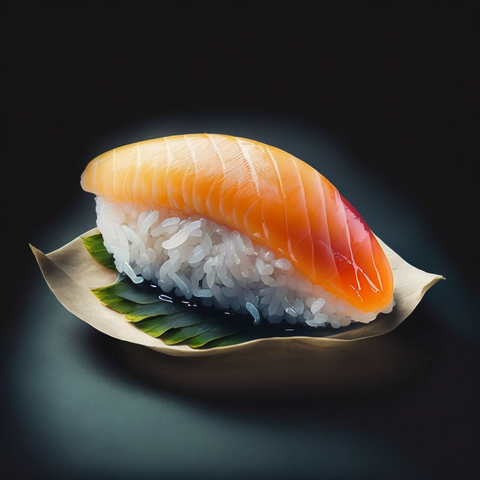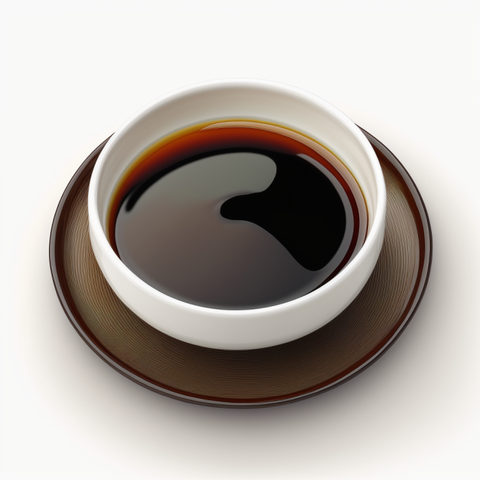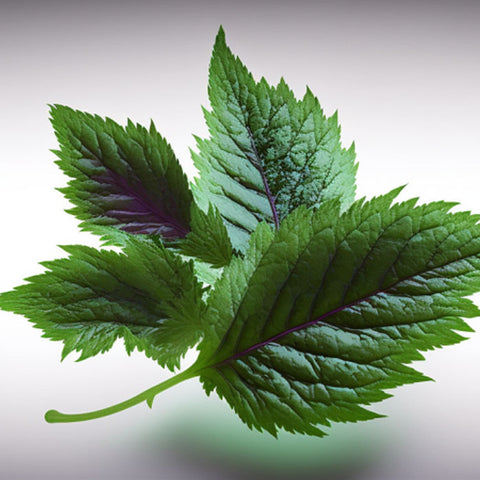
Hey there, sushi lovers! Are you tired of not knowing the difference between nigiri and sashimi?
Are you constantly mixing up these two tasty treats at your local sushi joint? Fear not, because we're here to clear up the confusion once and for all.
In this article, we'll dive deep into the world of nigiri and sashimi, exploring the history, ingredients, preparation, and, most importantly, the differences between these two beloved dishes.
So sit back, grab some soy sauce, and let's get to the bottom of this sushi mystery. Nigiri vs sashimi - let the showdown begin!
Table of contents
- Definition and origins of Nigiri and Sashimi
- Ingredients used in nigiri and sashimi
- Ingredient's that accompany Nigiri and sashimi
- preparation of nigiri and sashim
- whats the Nutritional Value of Nigiri and Sashimi?
- What Are The Best Knives For Preparing Nigiri And Sashimi?
- Safety Tips for Eating Raw Fish
- Where to Find Nigiri and Sashimi
- conclusion
- FAQ
Definition and origins of Nigiri and Sashimi

Nigiri: Nigiri is a type of Japanese sushi made with a small, oblong ball of vinegared rice topped with a slice of raw or cooked fish, seafood, or other ingredients.
The fish or other ingredient is typically placed on top of the rice with the help of a small amount of wasabi, and the whole piece is then eaten with the fingers or chopsticks.
Nigiri is believed to have originated in the Edo period (1603-1868) in Japan.

Sashimi: Sashimi is a type of Japanese dish consisting of thinly sliced, raw fish or seafood served without rice.
It is typically served with soy sauce and wasabi for dipping, and may also be accompanied by vegetables or other accompaniments.
Sashimi is also believed to have originated in Japan, although the exact history is not well documented.
It is thought to have evolved from earlier dishes in which raw fish was consumed with rice, such as narezushi (fermented raw fish) and haya-sushi (quickly pickled raw fish).
These dishes are believed to have originated in Japan in the early stages of its history, perhaps as early as the 7th or 8th centuries.
Ingredients used in nigiri and sashimi
Nigiri: The main ingredients in nigiri are vinegared rice (called Shari) and a slice of raw or cooked fish, seafood, or other ingredient (called neta).
The neta is typically placed on top of the Shari with the help of a small amount of wasabi. Other ingredients that may be used in nigiri include vegetables, eggs, and various types of meat.
Sashimi: The main ingredient in sashimi is thinly sliced, raw fish or seafood.
Common types of fish and seafood used in sashimi include tuna, salmon, yellowtail, squid, octopus, and shrimp.
Sashimi may also be made with other types of thinly sliced meats, such as beef or chicken.
Ingredients that accompany Nigiri and sashimi

Wasabi:
Wasabi is a spicy green condiment that is often served with both nigiri and sashimi.
It is traditionally mixed into the soy sauce for dipping, or it may be served as a small dollop on the side.

Pickled Ginger:
Is often served with both nigiri and sashimi as a palate cleanser between bites. In Japanese cuisine, ginger is traditionally served in thin slices or shreds as a condiment or garnish.
It is believed to help refresh the palate and cleanse the breath after eating strong-flavored or aromatic foods.

Soy sauce:
In the case of nigiri, it is traditional to dip the neta (fish or other ingredient) side of the sushi into the soy sauce before eating it, rather than pouring the soy sauce over the top of the sushi.
This allows the flavor of the neta to be fully appreciated, as the soy sauce does not mask the taste of the fish. In the case of sashimi, the thinly sliced, raw fish or seafood is typically served with soy sauce for dipping.

Green onions:
Thinly sliced green onions, also known as scallions, are sometimes used as a garnish for both nigiri and sashimi.
They add a mild, oniony flavour and a pop of colour to the dish.

Shiso leaves:
Shiso leaves are a type of herb that are often used as a garnish for both nigiri and sashimi.
They have a slightly minty, slightly spicy flavor that complements the flavors of the fish or seafood.
Preparation of Nigiri and Sashimi
Nigiri is made by shaping a small, oblong ball of vinegared rice (called Shari) with the hands and topping it with a slice of raw or cooked fish, seafood, or other ingredient (called neta).
The neta is typically placed on top of the Shari with the help of a small amount of wasabi. The whole piece is then eaten with the fingers or chopsticks.
There are a few key steps to making nigiri: Preparing the rice: The rice for nigiri is typically made by mixing short-grain Japanese rice with a vinegar mixture and sugar. The rice is cooked according to the package instructions, and then the vinegar mixture is stirred in while the rice is still hot.
The rice is then allowed to cool before it is shaped into small, oblong balls. Preparing the neta: The neta for nigiri can be raw or cooked, depending on the type of sushi being made. Raw fish or seafood should be carefully prepared and handled to minimize the risk of food poisoning.
Cooked ingredients, such as egg or vegetables, can be prepared according to the desired recipe. Assembling the nigiri: Once the rice and neta are prepared, the nigiri is assembled by placing a small ball of rice in the palm of the hand and topping it with a slice of the neta.
A small amount of wasabi may be added to the top of the neta, if desired. The whole piece is then gently squeezed and shaped with the hands to form the final nigiri. Sashimi: Sashimi is made by thinly slicing raw fish or seafood and serving it without rice.
The fish or seafood is typically sliced using a sharp knife, and the slices are arranged on a plate or platter for serving. There are a few key steps to making sashimi: Selecting the fish or seafood: Sashimi is typically made with high-quality, fresh fish or seafood that is suitable for raw consumption.
Common types of fish and seafood used in sashimi include tuna, salmon, yellowtail, squid, octopus, and shrimp. Preparing the fish or seafood: The fish or seafood for sashimi should be carefully prepared and handled to minimize the risk of food poisoning.
It should be thoroughly cleaned and rinsed, and any bones or other inedible parts should be removed. The fish or seafood is then thinly sliced using a sharp knife.
Arranging the sashimi: The sliced fish or seafood is then arranged on a plate or platter for serving. It may be garnished with vegetables, herbs, or other accompaniments as desired. Sashimi is typically served with soy sauce and wasabi for dipping.
Whats the Nutritional Value of Nigiri and Sashimi?
Like Nigiri, the nutritional value of Sashimi depends on the ingredients used to make it.
Sashimi made with raw fish or seafood is a good source of protein, omega-3 fatty acids, and other nutrients. Sashimi is generally lower in calories and carbohydrates than nigiri, as it does not contain rice.
It is worth noting that both nigiri and sashimi may contain small amounts of fat, depending on the type of fish or seafood used. Some types of fish, such as tuna and salmon, are higher in fat than others, while others, such as squid and octopus, are lower in fat.
Overall, both nigiri and sashimi can be part of a healthy diet when consumed in moderation and as part of a balanced meal. It is important to be mindful of portion sizes and to choose high-quality, fresh ingredients when preparing these dishes.
Some types of fish and seafood used in nigiri and sashimi may contain trace amounts of mercury. Mercury is a naturally occurring element that can be found in small amounts in the environment, including in some types of fish and seafood.
The amount of mercury in fish and seafood can vary depending on a number of factors, including the species of fish, the location where the fish was caught, and the age of the fish. In general, larger, predatory fish tend to have higher levels of mercury, as they accumulate mercury from the smaller fish they eat.
It is worth noting that while some types of fish and seafood may contain mercury, the benefits of including seafood in the diet generally outweigh the potential risks. Seafood is an important source of protein, omega-3 fatty acids, and other nutrients that are important for good health.
The US Food and Drug Administration (FDA) and the Environmental Protection Agency (EPA) have established guidelines for the safe consumption of fish and seafood, including recommendations for which types of fish are safe to eat and how often they should be consumed.
It is generally recommended that pregnant women, nursing mothers, and young children avoid eating certain types of fish and seafood that are high in mercury.
What Are The Best Knives For Preparing Nigiri And Sashimi?
When preparing nigiri and sashimi, it is important to use a sharp, high-quality knife to ensure precise and clean cuts.
The following are some of the best knives for preparing nigiri and sashimi:
Yanagiba: This long, slender knife is designed specifically for slicing raw fish and is the most commonly used knife for preparing sashimi. The yanagiba has a single-edged blade that is sharpened on one side, allowing for precise, clean cuts.
Deba: This heavy, thick-bladed knife is used for cutting through fish bones and filleting larger fish. It can also be used to prepare sashimi, although it is not as commonly used as the yanagiba.
Usuba: This thin, rectangular-shaped knife is used for precise vegetable cutting and can also be used to prepare sashimi. It has a thin, single-edged blade that is sharpened on one side, allowing for clean cuts.
Santoku: This multi-purpose knife is similar to a chef's knife and can be used for a variety of tasks, including preparing sashimi. It has a shorter, wider blade than the yanagiba and is suitable for slicing smaller cuts of fish or seafood.
It is worth noting that when selecting a knife for preparing nigiri and sashimi, it is important to choose a high-quality, sharp knife that is made of a durable, corrosion-resistant material such as stainless steel or high-carbon steel. Proper care and maintenance of the knife, including sharpening and honing, is also important to ensure its longevity and performance.
Safety Tips for Eating Raw Fish
- Choose high-quality, fresh ingredients: It is important to choose high-quality, fresh ingredients when preparing raw fish or seafood. Look for fish that is firm and has a fresh, clean smell. Avoid fish that looks or smells spoiled.
- Properly store and handle raw fish: Raw fish should be stored at a temperature of 40°F (4°C) or below to minimize the risk of bacterial growth. It should be handled with care to prevent contamination, and all utensils and surfaces that come into contact with raw fish should be properly cleaned and sanitized.
- Be aware of any potential allergies: Some people may be allergic to certain types of fish or seafood. If you have a known allergy, be sure to avoid those ingredients and be mindful of any potential cross-contamination when preparing or eating raw fish or seafood.
- Avoid raw fish during pregnancy: Pregnant women are at higher risk of food poisoning and should avoid eating raw fish or seafood to minimize the risk of infection.
- Use caution when consuming raw shellfish: Some types of raw shellfish, such as oysters, can carry harmful bacteria and viruses that can cause food poisoning. It is important to be cautious when consuming raw shellfish and to follow proper handling and storage guidelines to minimize the risk of illness.
Where to Find Nigiri and Sashimi
If you're a sushi fanatic, chances are you've heard of nigiri and sashimi. These delectable dishes are the stars of the sushi world, and they're available at sushi restaurants and other Japanese-style dining establishments all over the globe.
In fact, you might be surprised at just how widespread these dishes are - you can find them in just about any city or town that has even a passing interest in sushi.
But where can you get your hands on these delicious treats? It's as easy as pie (or, in this case, raw fish). Just head to your nearest sushi joint, and you'll likely find both nigiri and sashimi on the menu.
Or, if you're feeling adventurous (and have access to some high-quality, fresh fish), you can even make them at home! Just head to your local specialty market or well-stocked supermarket, and you'll find all the ingredients you need to whip up a batch of these tasty treats.
So don't be shy - give nigiri and sashimi a try and see for yourself why these dishes are such fan favorites. Whether you're a sushi connoisseur or a raw fish novice, there's a nigiri or sashimi out there for everyone. Happy eating!
Conclusion
Well, there you have it, folks! The great nigiri vs sashimi debate has finally come to a close. We hope you've enjoyed this journey through the world of sushi and that you now feel a little bit more knowledgeable about these two beloved dishes.
So, which one will you choose next time you're craving some sushi? Will it be the classic nigiri, with its oh-so-tasty topping of raw or cooked fish perched atop a perfectly formed ball of vinegared rice? Or will you opt for the elegant simplicity of sashimi, with its thinly sliced raw fish or seafood, ready for dipping in a pool of soy sauce and wasabi? The choice is yours!
No matter which of these dishes you prefer, they are both delicious and offer a unique and satisfying dining experience. Just be sure to choose high-quality, fresh ingredients, and don't forget the soy sauce and wasabi. Happy eating, sushi lovers!
FAQ
Q- What is the main difference between nigiri and sashimi cuts?
A- The main difference between the cuts of fish or seafood used in nigiri and sashimi is the thickness of the slices.
In nigiri, the slice of fish or seafood is typically placed on top of a small ball of vinegared rice, so the slice is usually thicker than the slices used in sashimi.
Sashimi, on the other hand, consists of thinly sliced raw fish or seafood that is typically served with soy sauce and wasabi for dipping. In addition to the difference in thickness, the cuts of fish or seafood used in nigiri and sashimi may also vary in terms of their shape and size.
Nigiri slices are usually rectangular or oval in shape and are typically smaller than sashimi slices. Sashimi slices, on the other hand, can vary in shape and size depending on the type of fish or seafood being used and the preference of the chef.
Q- Is nigiri always raw?
A- Nigiri is a type of sushi that consists of a small ball of vinegared rice topped with a slice of raw or cooked fish, seafood, or other ingredient. While many types of nigiri are made with raw fish or seafood, some types of nigiri may be made with cooked ingredients.
Q-Is sashimi just raw fish?
A- Yes, sashimi is typically made with thinly sliced raw fish or seafood. Sashimi is a traditional Japanese dish that is enjoyed for its delicate flavor and texture. It is typically served with soy sauce and wasabi for dipping and may be accompanied by a variety of garnishes, such as shredded daikon radish, sliced scallions, or sliced lemon.



